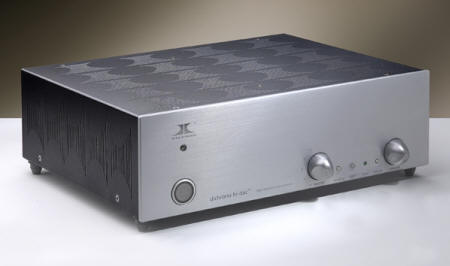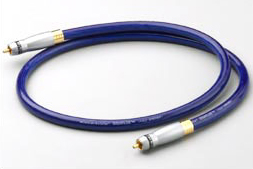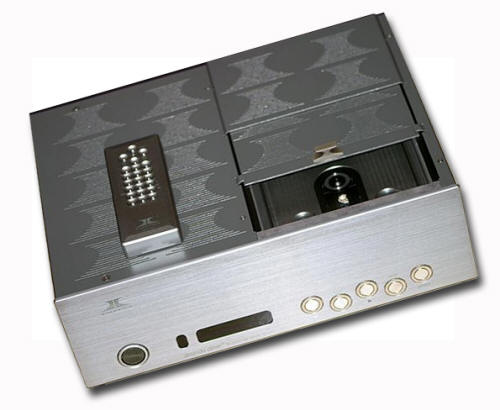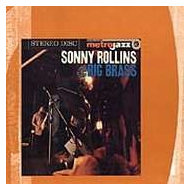You are reading the older HTML site
Positive Feedback ISSUE
13
may/june 2004
ensemble
dichrono Hi-dac and dirondo transport
as reviewed by Larry Cox

the ensemble dichrono
| LARRY COX'S SYSTEM LOUDSPEAKERS ELECTRONICS SOURCE CABLES ACCESSORIES
|
Ensemble of Switzerland has brought a new DAC/transport combination to the audio market. The dirondo drive is a transport that retails for $7980. The Hi-dac, a digital-to-analog converter that can also be operated as a preamp, is $6980. Included as part of this review, but not in the price, is Ensembleís Gigaflux digital cable, available with either RCA-to-RCA or BNC-to-BNC connections. Like many things Swiss, the design of these units is understated. All Ensemble components are the same height and width, and have the same look, color, and visual "feel." Their visual simplicity belies an exceptional technical sophistication and build quality.

Much to my fatherís disappointment, I am not an engineer, and in the process of reviewing audio gear, I have not become one. Design terms are not my bailiwick. Like a layperson speaking about law, I can sound intelligent for a sentence or two, then the trapdoor opens and I embarrass myself rather quickly. This, then, is what I was able to glean from the Ensemble website (www.ensembleaudio.com), and from correspondence with Ensembleís chief designer and principal, Urs Wagner. When you see quotation marks, I am quoting him.
First the dirondo drive. This is an apparently simple, top-loading device, but it is designed from the ground up to create an environment in which factors like resonance and vibration are anticipated, allowing the CD to be read in as ideal an environment as possible. The CD is placed into a well milled from one inch of solid aluminum. The well has a surface structure that is "satin and micro-granular in aspect through a special finishing process to create ideal light diffraction conditions." The mechanism is a Philips CD PRO-2M with a life expectancy of 15,000 hours, or about three hours of listening a day, seven days a week, for thirteen years. The mechanism is supported by "a complex damping module, the central part of which is a totally inert piece like a block, made up of fourteen layers of damping material in [a] constrained mode configuration." The laser unit is mounted beneath the aluminum well. Specially formulated rubber stubs provide further mechanical damping.
The dirondo incorporates upsampling technology. The circuit board that recalculates the digital data is mounted on the rear wall of the transport, which is mechanically decoupled from the rest of the unit. The circuit board asynchronically resamples the data and interpolates it according to a highly complex algorithm that Ensemble calls Bit Zoom Technology.ô The Bit Zoom technology, employing a very powerful microprocessor, is able to provide enhanced resolution and exceptionally low jitter, reaching up to 19.5 bits of resolution. Since the upsampling board is on the same decoupled rear wall as the BNC and RCA outputs, the signal path is as short as possible.
Each section of the dirondo drive is "compartmentalized with metal partitions shielding off potential electromagnetic interference. Attention was paid to the routing of the internal wiring, not only for shielding but also in the form of a guided cable layout." Contacts are gold plated and beautifully executed. The dirondo uses a CD puck that Ensemble calls Vibrasorb,ô made of two layers of carbon fiber sandwiching a proprietary foam that is very light in weight. There is a magnet attached to the top of the Vibrasorb that magnetically clamps the CD in place. When the drawer is closed, a blue light bathes the CD. The light is purely cosmetic, and is not related to YBAís "stachostic" noise filtering.

the ensemble dirondo
A number of features are available from the front panel. There is a phase inversion switch (also on the remote). Simultaneously press the stop and phase button on the front panel of the dirondo, and you add a preset amount of dither for bright sounding CDs. I found the efficacy of the dither to be hit or miss. I found it useful on some discs but not desired or necessary on others. Whether the amount of dither is enough or too much will depend upon the individual CD, and the sound of your system.
RCA and BNC outputs can be found on the back of the unit. In my system, the BNC connectors sounded FAR better than the RCAs, using the same wire Having experienced this, I am surprised that BNCs arenít more widely used. Also, instead of a cheap Belden power cord, you get Ensembleís entry-level cord, the Powerflux "Gold" FSF.
Like the dirondo, the Hi-dac is understated in appearance, and is designed to reduce or eliminate vibration and resonance. It has the same specially formulated rubber feet. The circuit board sits on another set of these feet. The Hi-dac is shipped as a digital-to-analog converter, with a preset output level, but it can operate as a remote control preamp, with the remote allowing control of volume, phase, and all of the more usual controls. The unit can be operated at a 44.1 kHz or a 96 kHz sampling rate. I tried both, but preferred 96. Converting the unit to preamp function involves removing some hex nuts, popping the lid, and switching jumpers. The Hi-dac is a meticulously constructed piece of electronics. The circuit board reveals exceptionally high standards of hand soldering. The circuit board connects to the rear wall through what look like stiff, solid copper wires, with no doubt an exact 90-degree bend.
There are four inputs. The digital inputs include one BNC, one RCA, and one enhanced Toslink connection. There is one analog input via a pair of RCA connectors. The DAC will accept 14- to 24-bit digital inputs, as well as 32kHz to 96kHz sampling rates. There is a board built to handle DVD-A and SACD, but this will not be made available until the audio community has settled on a standard interface. (There are currently a number of competing but incompatible interfaces.) Source selection on the DAC is manual, so youíll have to leave your throne to switch sources. All switches and knobs have a tactile, high quality feel. The preamp allows a choice of gain settings: low, medium, and high. Brian Ackerman, Ensembleís U.S. importer, suggested trying the higher gain setting to see if that would compensate for a slight loss in body when switching from my tube line stage to the Hi-dac, but with so many other features to look into, I forget to try this out.
Both the Hi-dac and the dirondo come with their own milled aluminum remote controls. All control buttons are set below the surface of the remote, so that an inadvertent touch will not erroneously reset volume level or change tracks or sources. This was perhaps the most intricately built, though simple, remote control I have used. Like the dirondo and the Hi-dac, the remote control unit is built to last a lifetime or so.
Ensemble doesnít come out with new products every year. They seem to have a product cycle of about six years. This history of painstaking attention to detail means that Ensemble products arenít often on the used market, and donít stay there very long when they are. Although expensive, their exceptional durability can make them real bargains if you keep them for their full life cycles. Whereas the cost of some products reflects the use of materials that have no sonic impact, each and every part of these Ensemble products appears to have been included to contribute to their excellent sound.
My system is quite detailed, but doesnít hit you between the eyes, demanding that you notice it. Rather, it invites you to listen into the music and immerse yourself without fear of being assaulted. I tend to sit about fifteen feet from the speakers, which are about seven feet apart. Itís a far-field listening experience, but my lasting impression of the dirondo and Hi-dac was of a natural precision that diminished the distance between a far-field and a near-field experience, without any of the leanness or loss of musicality that can accompany products straddling the line of transparency. The Ensemble duo had a natural immediacy and vividness without being forward, bright, hard, or analytical. They also impart a sense of solidity and control. The combinationís bass foundation revealed that my Audio Note 3.1x CD player is flabby and uncontrolled, as well as lacking in deep bass. The Ensemble pair plumbed the depths as much as my speakers and amplification would allow.
 Bass was detailed, textured, and fast. Listening to Fantasia on a Theme by Thomas Tallis by Ralph Vaughn Williams was a treat. The room literally quivered with the opening bottom octave lines, something that my CD player canít do. There was a bulldozer sureness to the bass with the Ensemble pair that was quite reassuring. Nor was the bass an immoveable mass. It conveyed a keen sense of rhythm that maintained the swing of music. Bravo! Treble was very good, without ever straying into a wiry sound, bleaching, crispiness, or other treble toxicity. High notes retained their natural filigree, while allowing the appropriate pressurization. The sound was both pleasing and accurate. The Ensemble pair got the treble more correct than any CD player or DAC/transport combo has in my system.
Bass was detailed, textured, and fast. Listening to Fantasia on a Theme by Thomas Tallis by Ralph Vaughn Williams was a treat. The room literally quivered with the opening bottom octave lines, something that my CD player canít do. There was a bulldozer sureness to the bass with the Ensemble pair that was quite reassuring. Nor was the bass an immoveable mass. It conveyed a keen sense of rhythm that maintained the swing of music. Bravo! Treble was very good, without ever straying into a wiry sound, bleaching, crispiness, or other treble toxicity. High notes retained their natural filigree, while allowing the appropriate pressurization. The sound was both pleasing and accurate. The Ensemble pair got the treble more correct than any CD player or DAC/transport combo has in my system.
The clarity of sound was unspeakably good. This was the most transparent sound reproduction Iíve heard, yet it retained a rich and precise tone. Nor did the clarity come at the cost of the loss of life that solid state electronics can impart. Music flowed from the Ensemble like water from a mountain spring, and it was not flavorless, distilled water, where there is nothing to taste. On different discs, the sound had the thick musky flavor of forest honey, or of a heavy golden ale. In short, the pair allowed all the flavors or colors of music to be present without the dilution or thinning of a system trying for transparency but drying up tonal color. When the recording was good, instruments were clearly on display, with no sense that there was anything obscured, tainted, or otherwise altered. As with my favored ATC speakers, bad recordings sounded bad, but never in the same wayósome products make all bad recordings sound alike. The Ensemble pair made it obvious when different tracks on the same recording were recorded under differing conditions, then mixed with insufficient care. This is something Iíd previously heard so clearly only through a high end turntable.
Growing up, I never understood the Great Schnozolaís popularity, but through the Ensemble pair, Jimmy Duranteís Make Someone Happy was a delight. Duranteís big, loving personality was front row center. What he lacked in vocal talent he made up for in boldness and personality, as an entertainer if not a singer. This sort of experience has never been available to me from my CD player. When I compared my player to the Ensemble duo, my player initially sounded "freer." Where the Ensmble pairís focus was almost hyper-realistic, the Audio Noteís was more impressionistic. This may sound like the comparison favored the Audio Note, but believe me it didnít. The Audio Note didnít provide an equally valid take on the music. It fluttered when it should have sustained, adding distracting colorations or distortions to the sound. After listening to the Swiss pair, my Audio Note player sounded broken. Music, after all, involves rigorous observation of timing. The Ensemble pair clearly did this, and the Audio Note did not.
 With the 3.1x, the saxophone crescendos on the Metro Jazz remix of Sonny Rollinsí rendition of "Grand Street" on Sonny Rollins and the Big Brass (Verve Master Edition 312 557 545-2) didnít get louder by themselves, but seemed to require all the other instruments to increase in volume as well, as though there were a master volume control that forced all of the sound into a single crescendo, whether one was called for or not. The Ensemble pair allowed for multiple crescendos occurring at different speeds and loudness levels, without mixing the differing dynamics. The two were leagues apart. I used to think my player was quite exceptional. Woe is meóand my bank account!
With the 3.1x, the saxophone crescendos on the Metro Jazz remix of Sonny Rollinsí rendition of "Grand Street" on Sonny Rollins and the Big Brass (Verve Master Edition 312 557 545-2) didnít get louder by themselves, but seemed to require all the other instruments to increase in volume as well, as though there were a master volume control that forced all of the sound into a single crescendo, whether one was called for or not. The Ensemble pair allowed for multiple crescendos occurring at different speeds and loudness levels, without mixing the differing dynamics. The two were leagues apart. I used to think my player was quite exceptional. Woe is meóand my bank account!
I also tried the Hi-dac with both my Audio Note player and a Pioneer DV 525 DVD player as transports. I had thought that the impact of the transport would be nominal, but ironically, the $200 Pioneerís bass sounded better than that of the $3000 Audio Noteís. A good dollop of the depth of the dirondo remained with the Pioneer, but without the texture, tautness, and speed. Music retained a sense of presence in the room, with the colors that one associates with a beautifully played oboe, for instance, but as the frequency rose, the Pioneer faltered and the Audio Note got legs. The upper midrange and treble of the Audio Note was clearly superior to the Pioneerís. Where the Pioneer got a little etched, the Audio Note took on a greater sense of filigree, but where the Audio Note improved on the Pioneer, the dirondo offered mastery of the upper ranges, with a firm, yet delicate capacity for the ethereal. Emotional? You bet. Neither player seriously challenged the dirondo, in either sound or build quality.
Late in the review process, I thought to use the Hi-dac as the DAC for my DVD player in my video system, which is not a surround-sound system. With the Hi-dac, music and dialogue took a very substantial step up in quality, making listening so much easier that I didnít notice it until I took the Hi-dac out and had to work to understand dialogue.
In addition to using the Hi-dac/dirondo combination as a CD player, fed into my E.A.R. 864 preamp, I tried it as an all-in-one preamp/CD player fed straight into my amplifier. As a preamp, the Hi-dac let me know that the E.A.R. was a bit too warm and obscuring of low-end detail. E.A.R. products are particularly liquid sounding. The Hi-dac did not come across as liquid sounding, rather as a tonally correct preamp without any haze or leanness. With the 864 out of the system, some of the body it offered left, but the increased clarity and transparency seemed a worthy tradeoff.
Iíll make it no secret that Simone and I thought about finding a way to own one or both of these units. The Hi-dac would probably be the first choice for me, as it would allow me to have a very transparent, remote-controlled system that would handle digital music and digital movies. Of course, it was clear that the best sound came with the dirondo feeding the Hi-dac, but if Iím going to make a system change, itíll have to be in smaller steps.
Excellent quality is present throughout the design, execution, and performance of these products. The Ensemble duo made my CD player sound bad! I hated that, but I respect the Hi-dac/dirondo for it. Iíd say that the increase in performance was on the order of fifty percent. I want these pieces. If you are looking for a new way to appreciate digital audio in your home, youíd do well to look at Ensemble. I donít know whether there are better sounding products available or not. I just know I havenít heard them. Larry Cox
Dirondo
Retail: $7980
Dichrono
Retail: $6980
ensemble
web address: www.ensembleaudio.com
Artistic Audio
web address: http://www.aaudio.com
